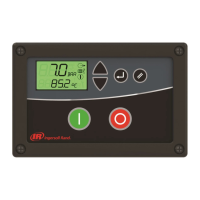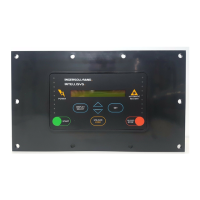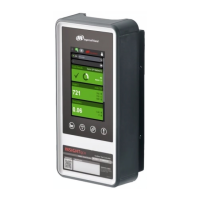SGNe Troubleshooting Guide Page 3
Revision 1.0; Davidson, May 2009. ©Ingersoll Rand Proprietary Information
SGNe
Troubleshooting Guide
Danger
Please utilize extreme caution when performing work within the compressor cabinet.
When opening the cabinet: be certain to wear appropriate PPE (Personal Protective Equipment),
follow lock out-tag out procedures, and ensure all safety procedures are followed
.
Compressed air and electricity can be dangerous. Before undertaking any work on the
compressor, ensure that the electrical supply has been isolated and the compressor
has been relieved of all pressure. Use proper Lock Out Tag Out procedures to ensure
you and your coworkers safety.
Keep all parts of the body and any hand-held tools or other conductive objects, away
from exposed live parts of the compressor electrical system. Maintain dry footing,
stand on insulating surfaces and do not contact any other portion of the compressor
when making adjustments or repairs to exposed live parts of the compressor electrical
system. Close and lock all access doors when the compressor is left unattended.
Do not use extinguishers intended for Class A or Class B fires on electrical fires. Use
only extinguishers suitable for class BC or class ABC fires. Attempt repairs only in
clean, dry, well lighted and ventilated areas. Connect the compressor only to electrical
systems that are compatible with its electrical characteristics and that are within it’s
rated capacity.
WARNING
Imposing a normal or emergency stop on the compressor will only relieve pressure up-
stream of the minimum pressure valve on top of the separator tank. If maintenance
work is required downstream of this valve, ensure that all pressure is relieved at the
process vent point external to the compressor.
This state is advised by selecting PACKAGE DISCHARGE PRESSURE on the control
panel.
Caution!!!

